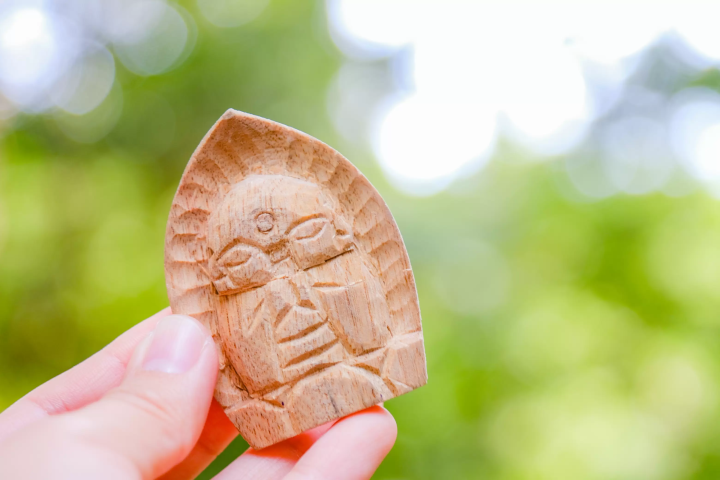The Izu Shuzenji area has long been loved as a historic hot spring destination. Often referred to as “Little Kyoto,” this charming town offers unique travel experiences you won’t find anywhere else. In this article, we’ll introduce special ways to enjoy local cuisine, culture, and traditional crafts that can only be experienced in the Shuzenji area.
2025.11.10-
Table of Contents
- What Kind of Place Is Izu Shuzenji?
- Wasabi, Omi Tofu, and Local Sake – Must-Try Delicacies in Shuzenji
- Experience Japanese Buddhist Culture in Shuzenji!
- Join a local guide and embark on a special tour of Shuzenji.
What Kind of Place Is Izu Shuzenji?
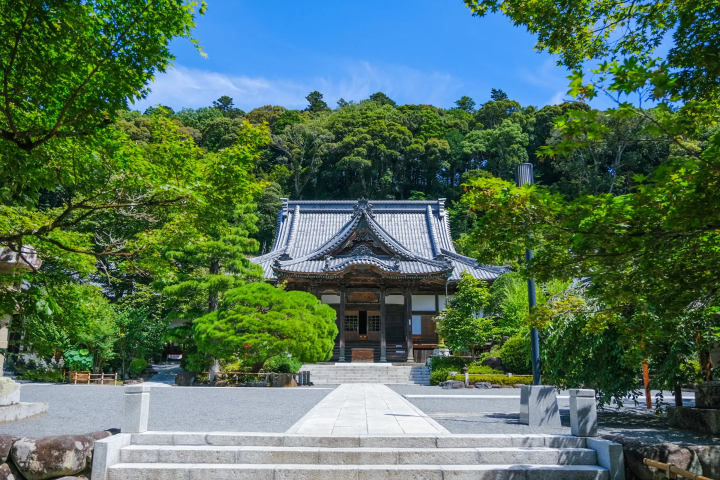
About two hours from Tokyo Station on the limited express “Odoriko” train, Shuzenji is a hidden gem surrounded by lush greenery. As you enjoy the scenic views from the train window, you'll soon arrive at this tranquil destination.
Known for its historic hot springs, Shuzenji is also a renowned hub for wasabi cultivation, recognized as part of a Globally Important Agricultural Heritage System (GIAHS). Thanks to its pure, clear waters, the region produces high-quality wasabi and offers a variety of local flavors, including craft beer, sake, and wine — all made from the blessings of nature.
At the heart of this town stands Shuzenji Temple, said to have been founded around 1,200 years ago by the great Buddhist monk Kukai (also known as Kobo Daishi), who had a profound influence on Japanese Buddhism. The temple also holds historical significance as the place where Shogun Minamoto no Yoriie was once confined. Even today, the temple exudes a solemn and sacred atmosphere.
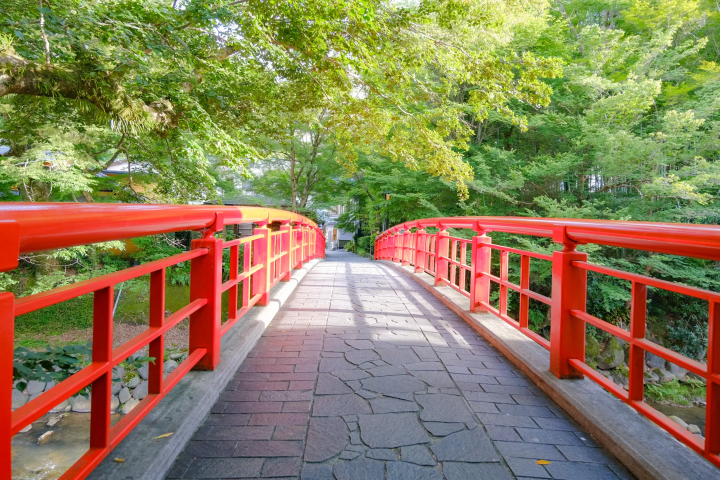
In this article, we’ll introduce spots where you can immerse yourself in the rich culture, cuisine, and history of Shuzenji. Get ready for a journey that engages all five senses — and discover a new side of this timeless town.
Wasabi, Omi Tofu, and Local Sake – Must-Try Delicacies in Shuzenji
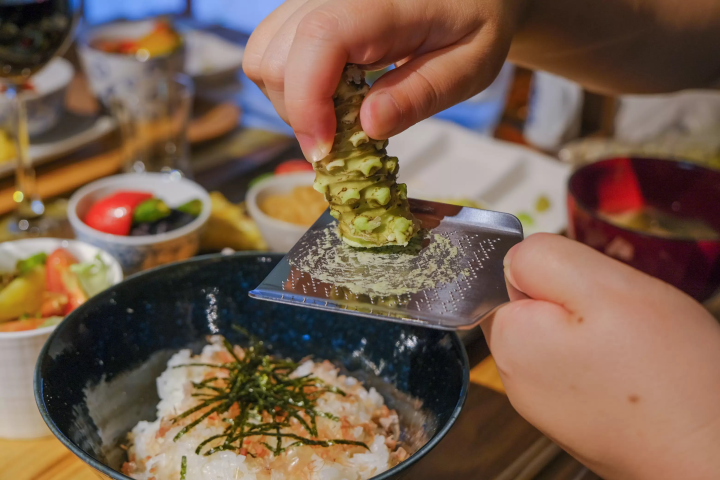
One of the highlights of any trip is the local cuisine. In the Shuzenji area, you’ll find foods that become even more flavorful when you learn about their production methods, the passion behind them, and the rich history they carry.
Let us introduce some of Shuzenji’s most special local delicacies — the more you learn about them, the more you’ll want to savor every bite.
From Sidekick to Star: The Sweet and Fragrant Charm of Wasabi
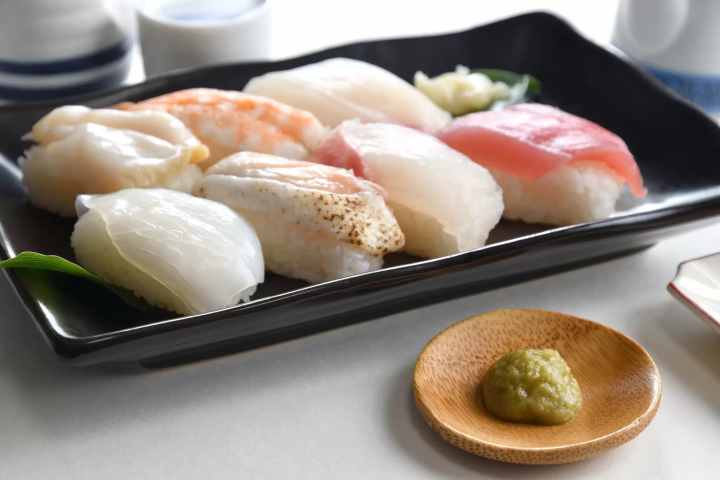
Picture Courtesy of Pixta
The pale green condiment served alongside sushi is wasabi. Its sharp, pungent flavor leaves a lasting impression — a quintessential Japanese seasoning you won’t forget once you try it.
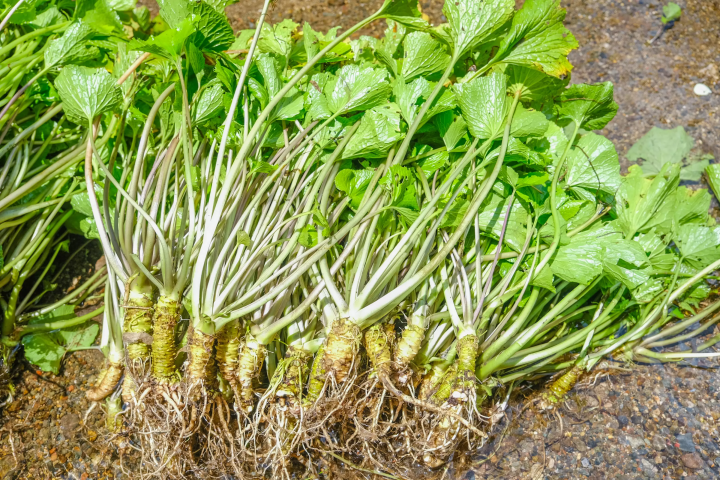
Wasabi cultivation actually originated in Shizuoka Prefecture. Originally, wasabi grew wild in the mountains, but full-scale cultivation began over 400 years ago in Utogi, Aoi Ward, Shizuoka City. About 300 years ago, the practice spread to the Izu region.
Wasabi cultivation took root in this region thanks to its rich natural conditions. The Ikadaba area in Izu City, known for its thriving water-grown wasabi farms, is located upstream of the Omi River and blessed with abundant spring water, maintaining a steady water temperature of around 13°C throughout the year.
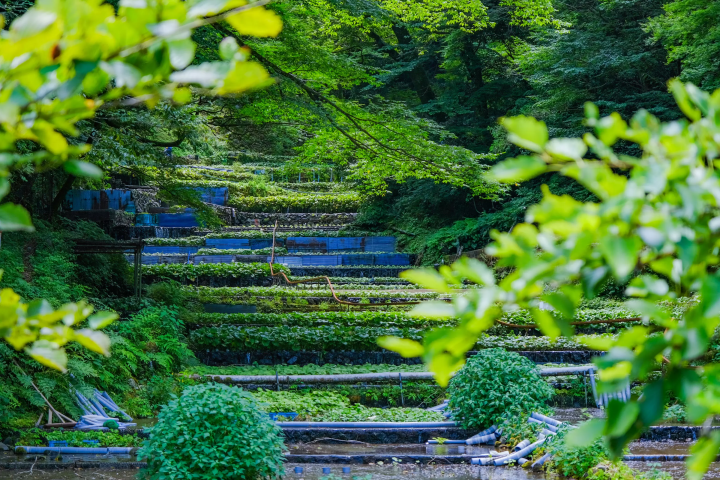
In addition, the Tatamiishi-style wasabi fields, developed 130 years ago and recognized as a Globally Important Agricultural Heritage System (GIAHS) in 2018, have become deeply rooted. Today, Shizuoka is known as a major production area of high-quality wasabi, accounting for about 70% of the national output.
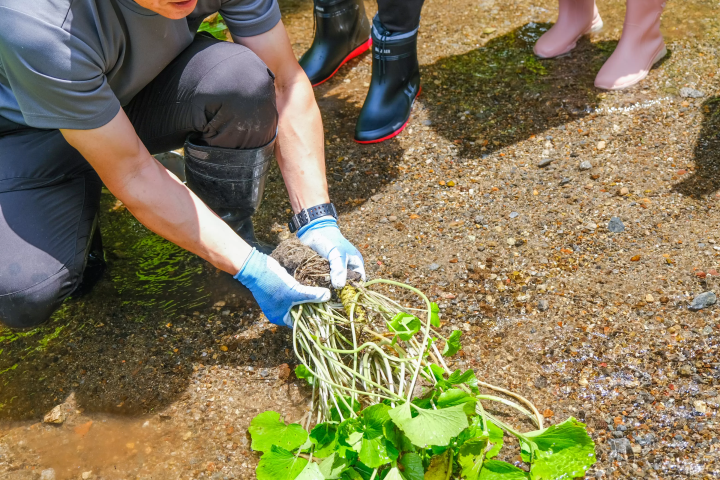
Izu-grown wasabi, which can sell for over 3,000 yen per root, is known for its exceptional quality. On this tour, you’ll have the rare opportunity to harvest it yourself and enjoy freshly grated wasabi on the spot.
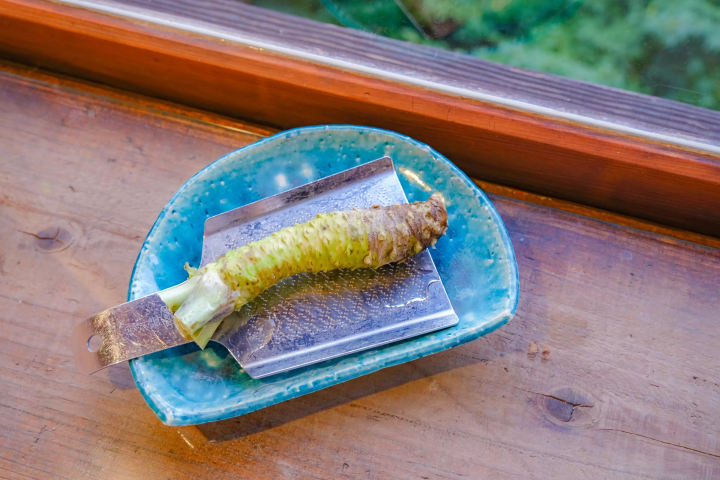
While enjoying the beautiful scenery of the Tataishi-style wasabi fields, you can harvest wasabi yourself. Freshly grated wasabi tastes completely different from the commercially sold paste varieties.
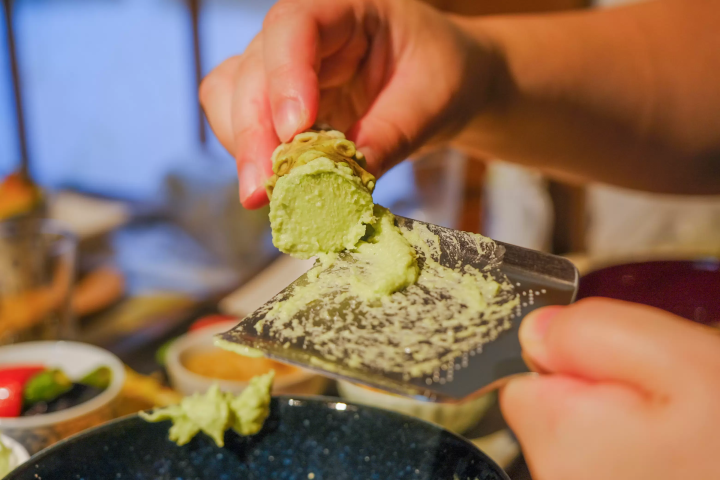
Commercially sold wasabi is typically a paste made mainly from processed leaves and stems, often with a sharp, pungent kick. However, in this experience, you grate the upper part of the rhizome itself. You can grate the wasabi directly onto your rice, where you’ll be surprised not by the sharp sting but by the gentle sweetness and rich umami that slowly spread across your palate.
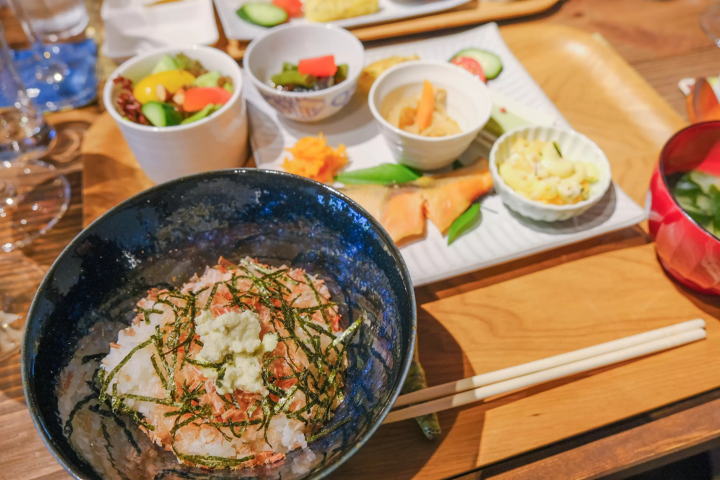
This unique gourmet experience will completely change your impression of wasabi. It is a must-try delicacy for anyone who wants to savor Japanese food culture on a deeper level.
Make Your Own "Omi Tofu"!
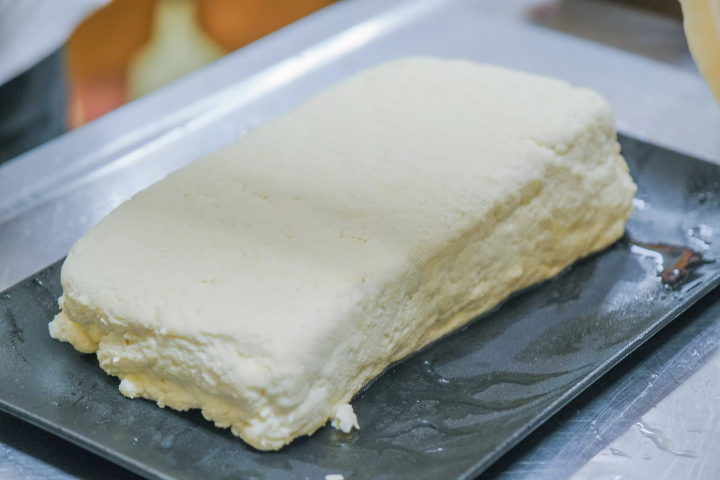
Tofu is an essential part of the Japanese dining table, found in dishes like miso soup, chilled tofu (hiyayakko), hot pots, and simmered dishes.
In the Omi area, the local specialty is "Omi Tofu", made using the pure spring water of Mt. Amagi and high-quality local soybeans called "Fukuyutaka." At 'Omi-no-Sato Kitara,' you can enjoy a hands-on tofu-making experience and shop for a wide variety of tofu products available only at this direct-from-the-maker store
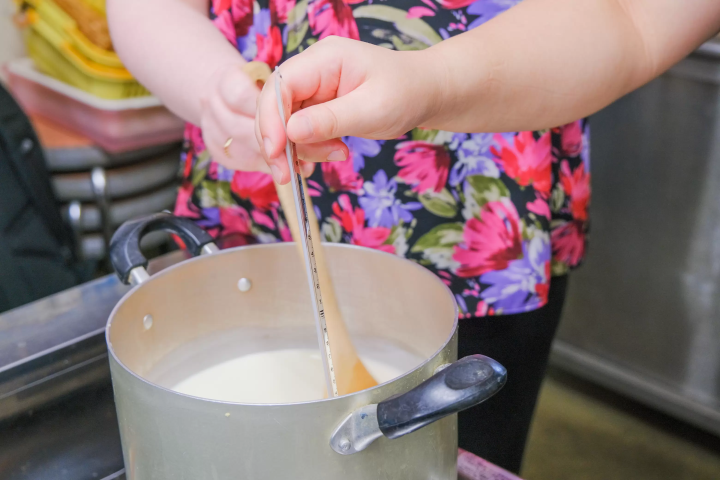
The one-hour tofu-making experience begins with tasting freshly squeezed soy milk. The rich, velvety soy milk is like drinkable tofu—once it touches your tongue, the gentle sweetness of the soybeans spreads softly in your mouth.
Next, the soymilk is gently stirred while gradually heating it up. Once it reaches 80°C, "nigari" (a natural coagulant) is added, and the tofu slowly begins to solidify. This waiting time is one of the most enjoyable parts of the hands-on experience.
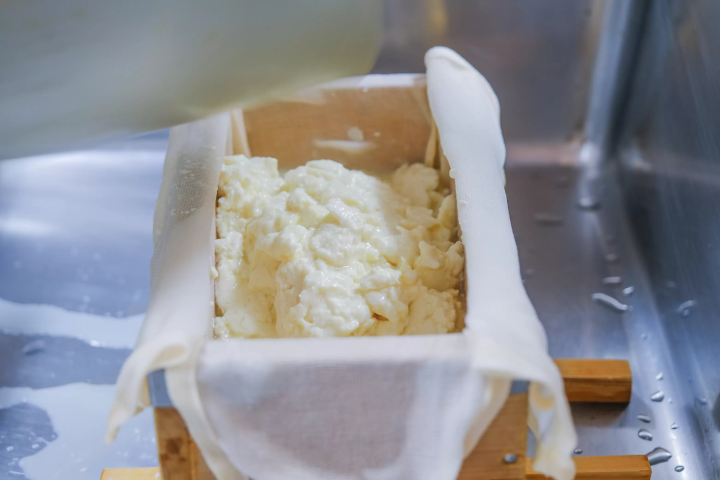
Once the tofu has set, it is placed into a special mold to shape it. At this stage, tofu that has naturally solidified is called "silken tofu", while tofu wrapped in cloth and pressed to remove excess moisture is known as "firm (or cotton) tofu".
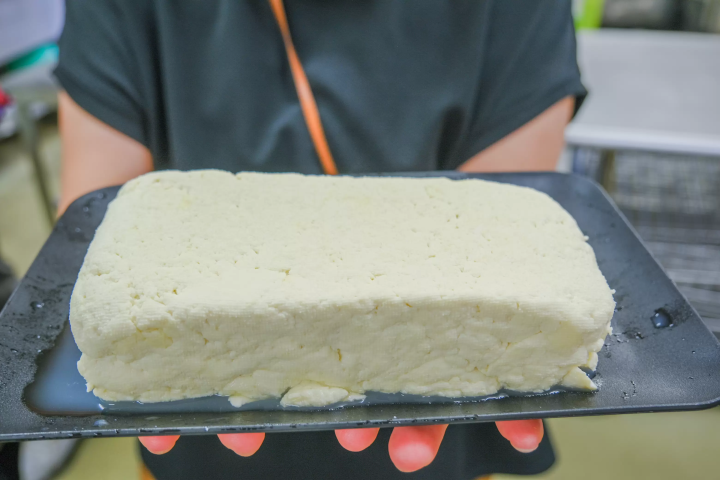
The Omi Tofu made with your own hands is rich in flavor, so full-bodied that you can taste its natural sweetness even when eaten on its own.
Not only with soy sauce, but also when eaten with a pinch of salt or together with wasabi, you'll discover new flavors.
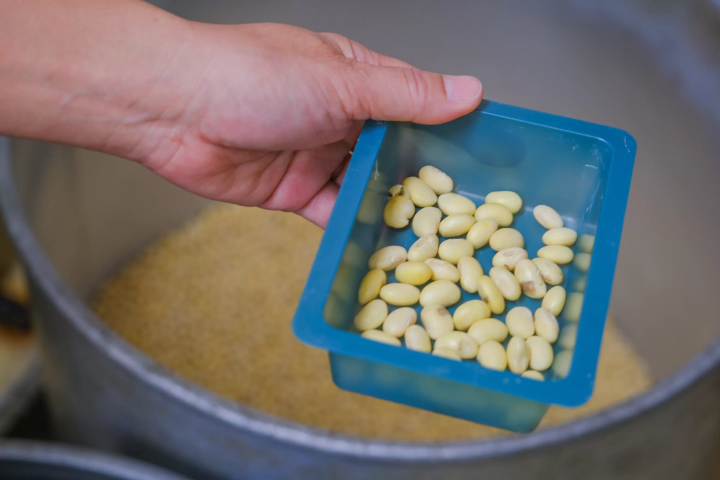
At 'Omi-no-Sato Kitara,' where you can experience making Omi Tofu, not only tofu but also fried tofu products like aburaage and atsuage, as well as freshly harvested local vegetables, are available for sale. It’s a great place to stop by as a souvenir shop where you can enjoy Shuzenji’s gourmet flavors at home.
The production of sake, wine, and beer is also concentrated in Shuzenji!
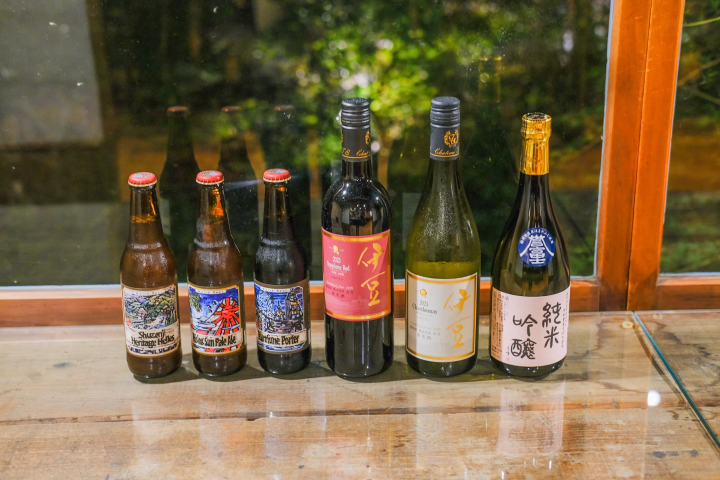
Shuzenji is a hidden gem known for its collection of sake breweries, wineries, and craft beer breweries.
Enjoying a wide variety of local drinks at inns and restaurants is a unique way to experience Shuzenji.
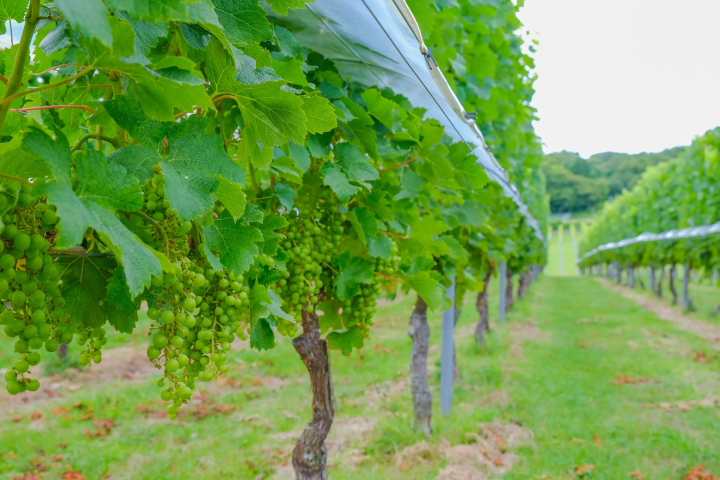
When it comes to wine regions, France, Italy, and Spain often come to mind, but in terms of majestic nature and passion for grapes, the Nakaizu Winery is just as impressive.
Nakaizu Winery handles everything from grape cultivation to winemaking and sales in-house. The estate features 10 hectares of vineyards where visitors can actually walk through the fields, and with prior reservation, enjoy horseback riding tours around the vineyards. There are exciting activities for both adults and children.
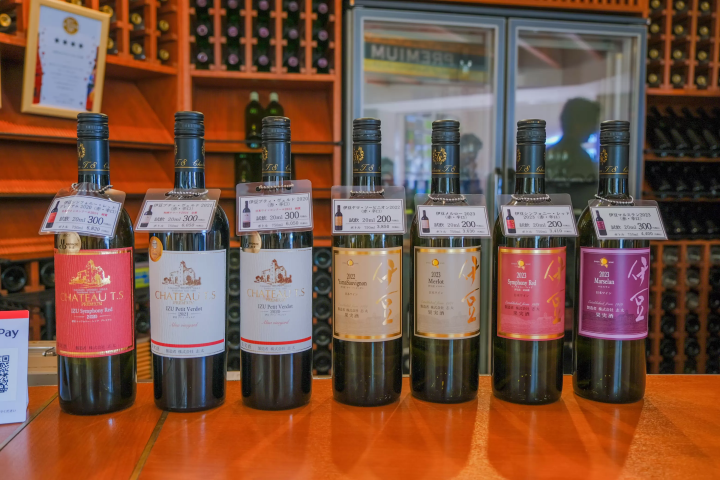
The tasting corner features award-winning wines from the 'Japan Wine Competition,' including 'Izu Petit Verdot 2020' and 'Izu Symphony Red Premium 2020,' among others.
Not only wine but also beer is crafted by making the most of Izu’s climate and natural blessings.
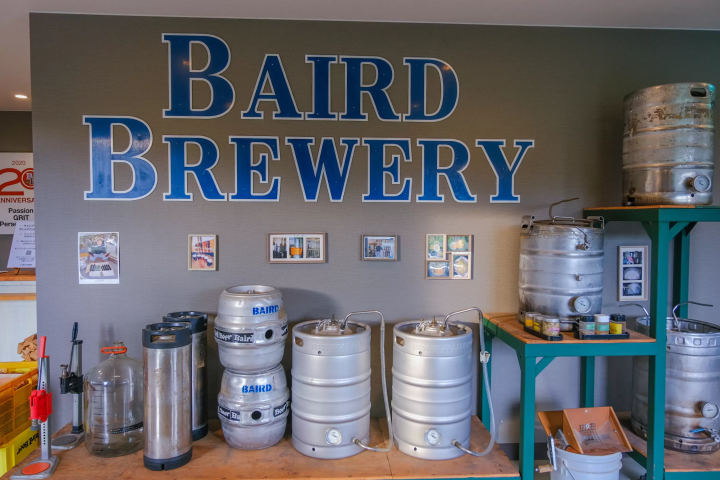
Established in 2000, BAIRD BREWERY has been brewing beer in Shuzenji with a commitment to minimal processing, aiming to bring out the fullest excellence of its ingredients.
By cultivating their own hops and utilizing well water from the Shuzenji area, the brewery combines local blessings with relentless effort to create unique and distinctive craft beers.
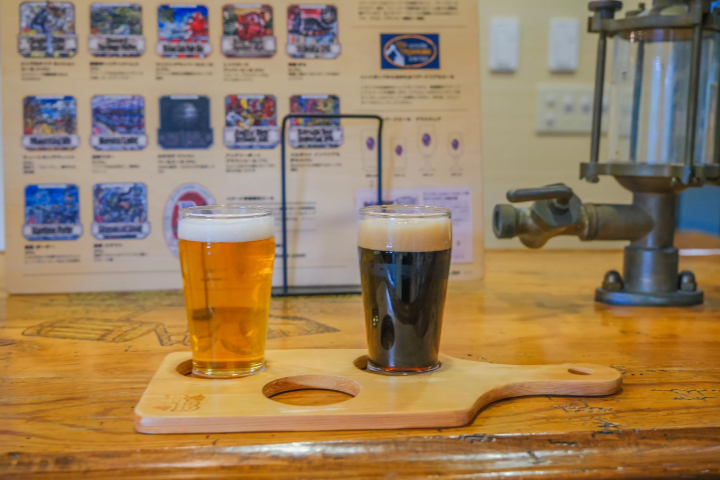
Additionally, as the only sake brewery in Izu, Bandai Jozo produces Japanese sake, making the Shuzenji area a treasure trove of attractions for sake lovers.
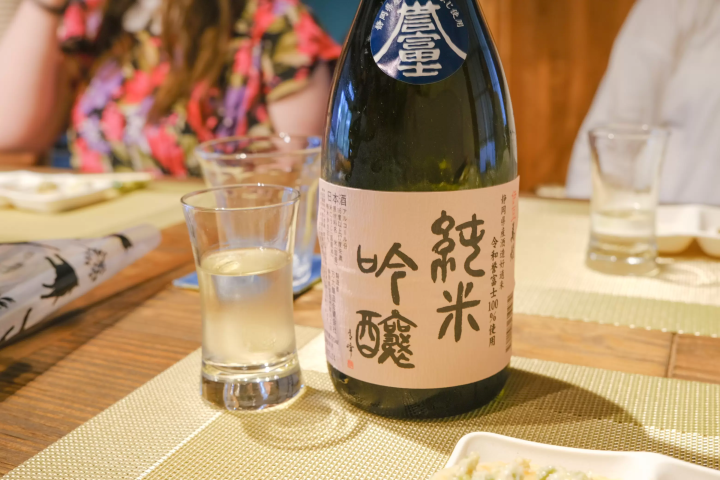
Experience Japanese Buddhist Culture in Shuzenji!
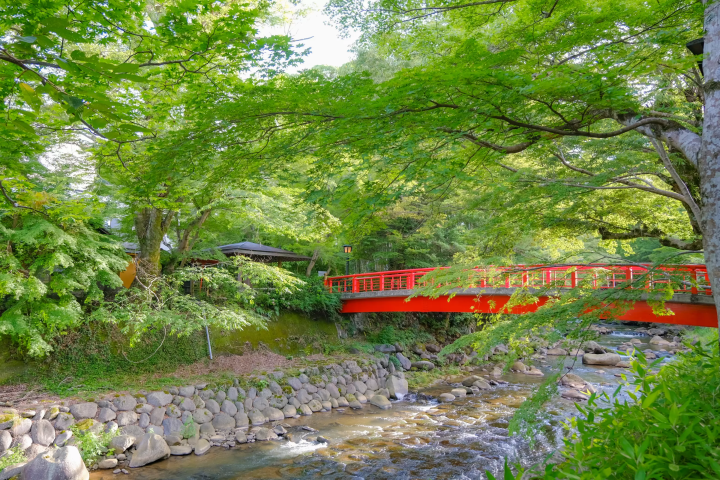
Shuzenji Temple is said to be the place where Minamoto no Yoriie (1182–1204), the second shogun of the Kamakura Shogunate, was imprisoned and spent the end of his life. According to legend, he carried a handmade amulet with him every time he went to battle. This area once boasted an extensive temple precinct stretching from Shuzenji Station to the Okunoin (Inner Sanctuary).
The influence from that time remains strong to this day, and Shuzenji continues to be a leading temple in Izu City, preserving Buddhist culture.
The author was fortunate to have a special opportunity to have a valuable experience at Shuzenji Temple. From here, I will share a detailed account of each part of that experience.
A rare opportunity in Japan: Learn directly from a master Buddhist sculptor and create a one-of-a-kind travel amulet.
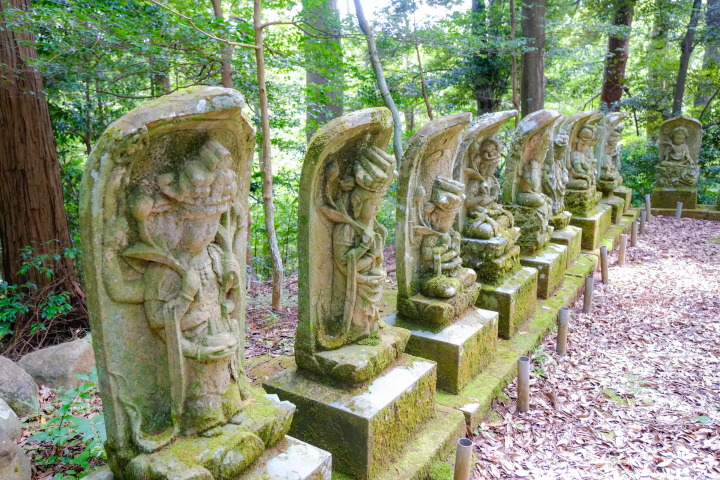
Buddhist statues are revered images modeled after Buddhas, bodhisattvas, guardian deities, and others. At Yoshiwara Kannon-do in Shuzenji Natural Park, there is the Thirty-three Kannon, said to change appearance depending on the viewer or worshipper.
When you look closely at the Kannon statues, you’ll notice a variety of expressions—some with troubled faces, some carrying a horse on their head, and others with many faces. It is said that these forms reflect the wishes and troubles of those who visit.
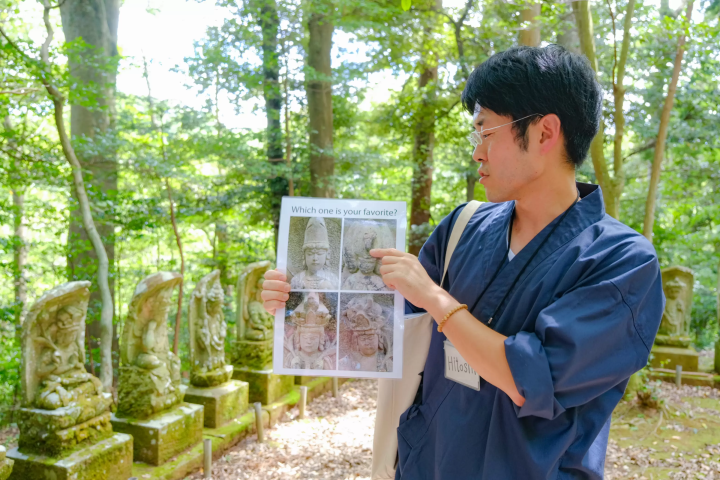
For example, some statues show troubled expressions to empathize with those in distress, while others with a horse represent the power to eliminate worldly desires, much like a horse eating away weeds. Each form has its own meaning.
Because these Buddha statues change their appearance depending on the person praying, the sculptor’s feelings naturally get reflected in the work, creating a one-of-a-kind figure in the world.
Moved by those words, I joined a woodcarving experience to create an 'Ojizo-sama,' a Buddha figure cherished among common people. Under the guidance of master Buddhist sculptor Jin Yamazaki, I picked up a carving knife.
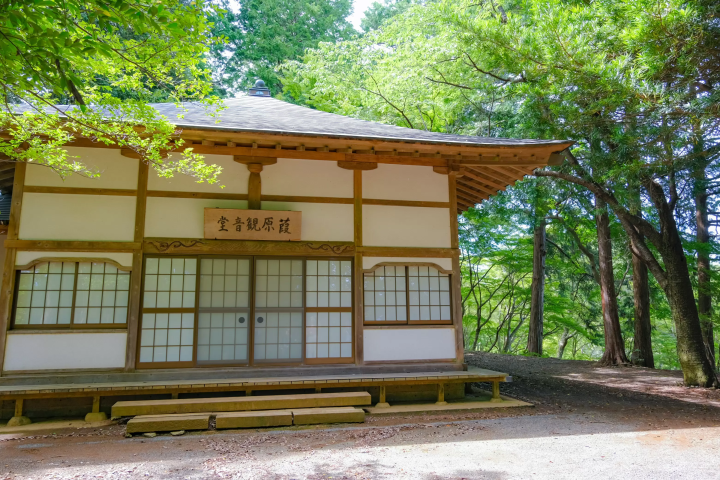
The workshop lasts about two hours. Holding fragrant camphor wood in my left hand and a carving knife in my right, I carefully focused on creating my own unique travel amulet.
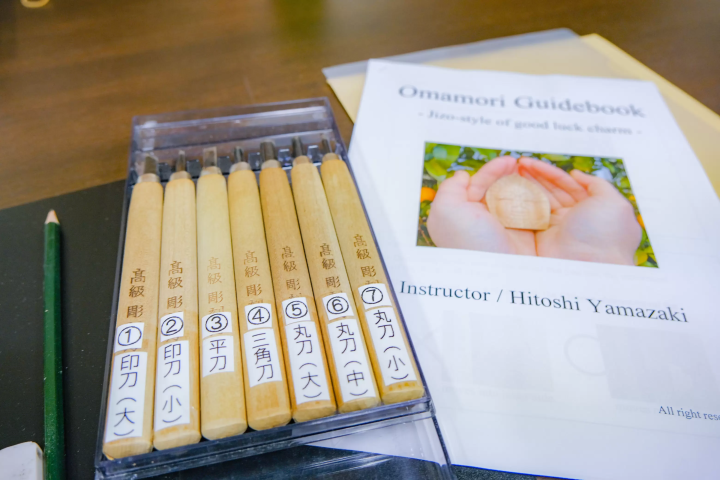
At first, my movements with the carving knife were awkward, but gradually they became smoother. The once angular Ojizo-sama took on rounded shapes, and its expression grew more vivid, quietly awakening my creative spirit.
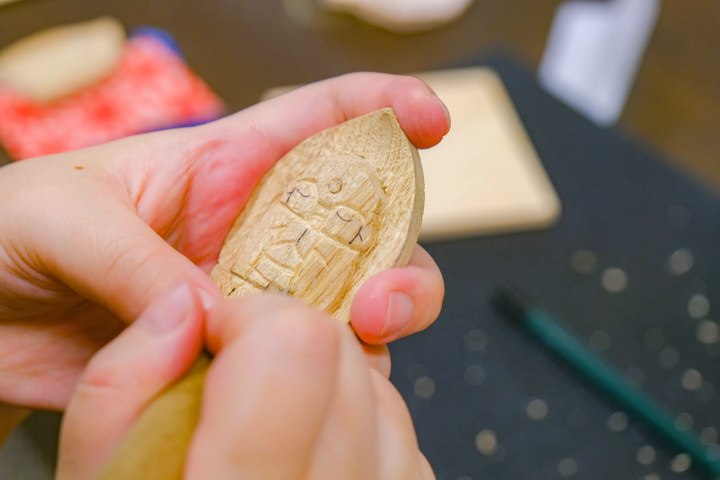
Finally, an original stamp was pressed on the back of the Ojizo-sama, marking the completion of the creation process.
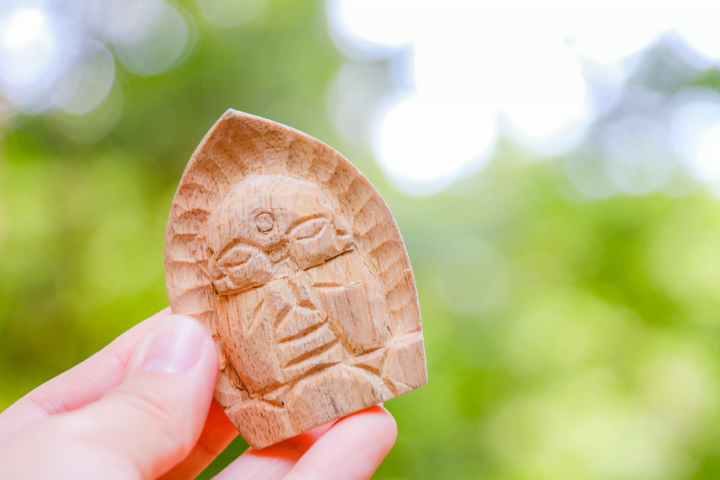
However, at this point, it’s just an ordinary wooden Ojizo-sama. What comes next is a sacred ceremony to breathe 'spirit' into the statue.
Morning Ceremony — Infusing the Amulet with Spirit
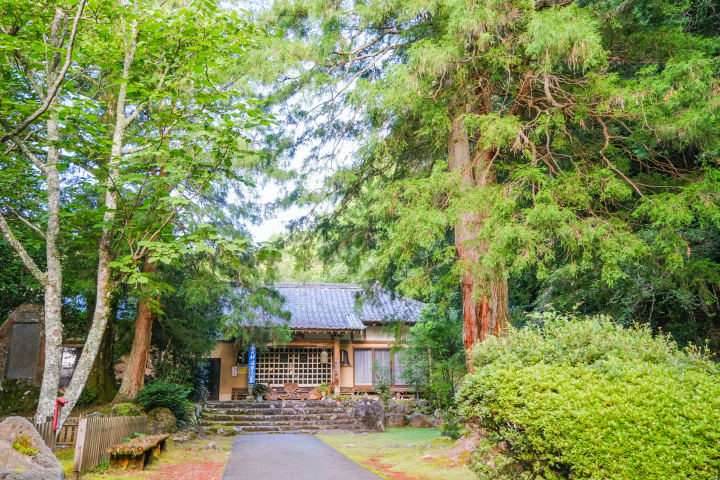
The next morning at 5:30 a.m., the sacred ceremony to infuse spirit into the Ojizo-sama finally begins.
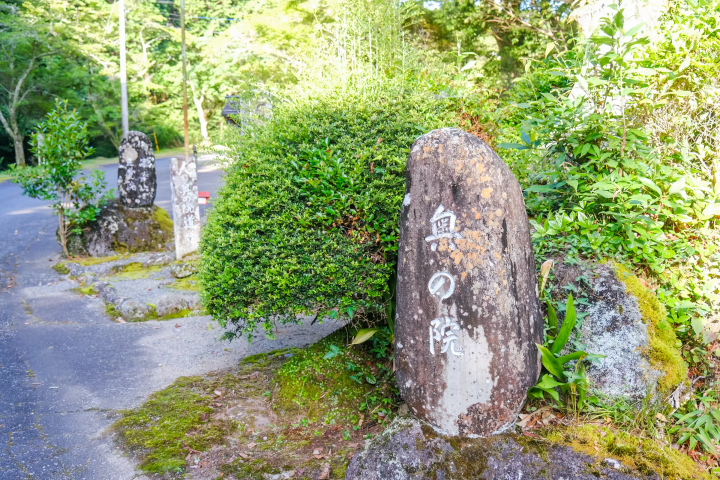
From the main hall of Shuzenji Temple, we follow the 'Iroha Path' about 5 kilometers west to the Okunoin, where Kobo Daishi Kukai is said to have trained. The morning sutra chanting begins quietly there.
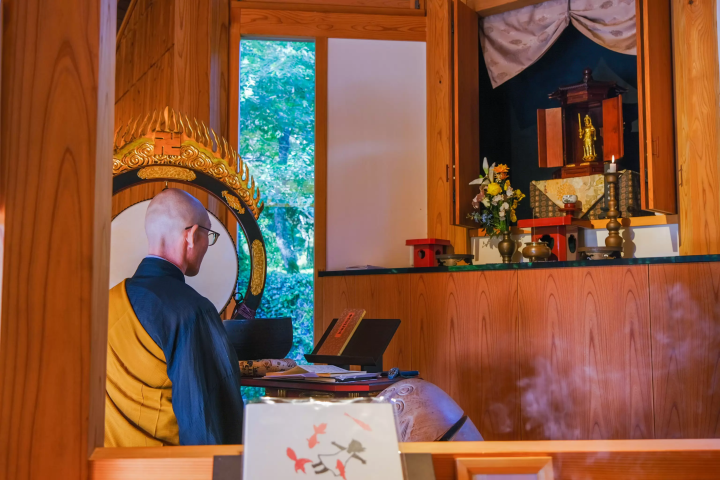
During the approximately 30-minute morning ceremony, the infusion of spirit and prayers proceed solemnly. Each participant’s name is called aloud during the chanting, and there is a moment for offering incense to join the sutra recitation. The sound of the sutras and the scent of incense resonate quietly, deeply touching the heart.
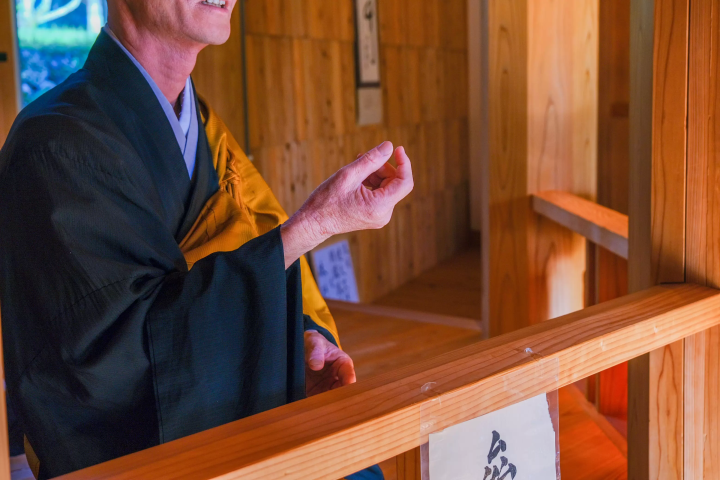
This truly special experience, possible only at the Okunoin, became a unique and deeply memorable moment, accompanied by the sutras being chanted aloud.
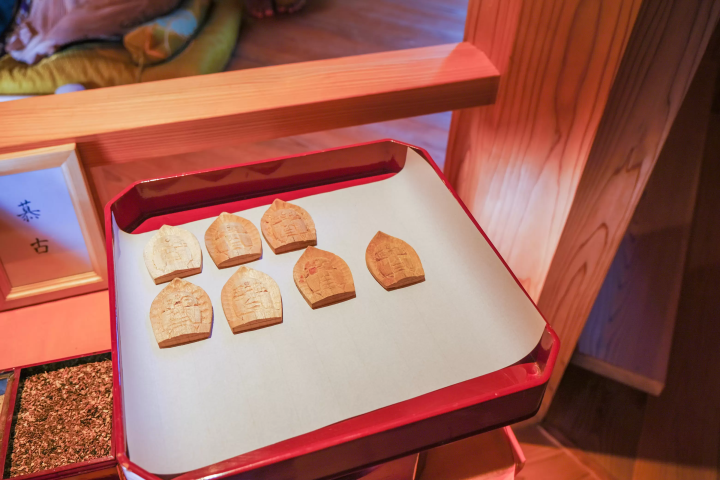
After the morning ceremony, the Ojizo-sama transformed from a simple wooden carving into a guardian Buddha imbued with spirit. With prayers for a safe journey and gratitude for this connection in my heart, I carefully took it home.
Join a local guide and embark on a special tour of Shuzenji.
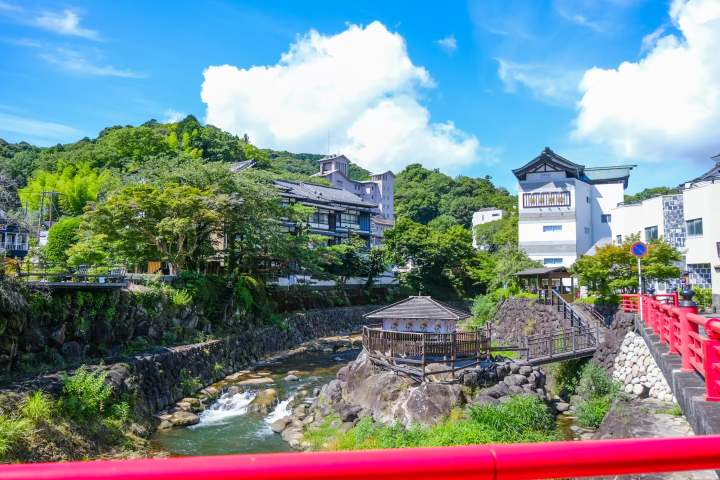
Experiences introduced in this article, such as wasabi harvesting and Jizo carving, can be enjoyed by anyone by signing up for the tour.
This tour focuses on Shuzenji’s rich natural environment and its fascinating history. An English-speaking guide, born and raised in Shuzenji, will accompany the group. With their lively and cheerful commentary, you’ll get to fully enjoy the lesser-known charms of Shuzenji.
The contents on this page may partially contain automatic translation.


